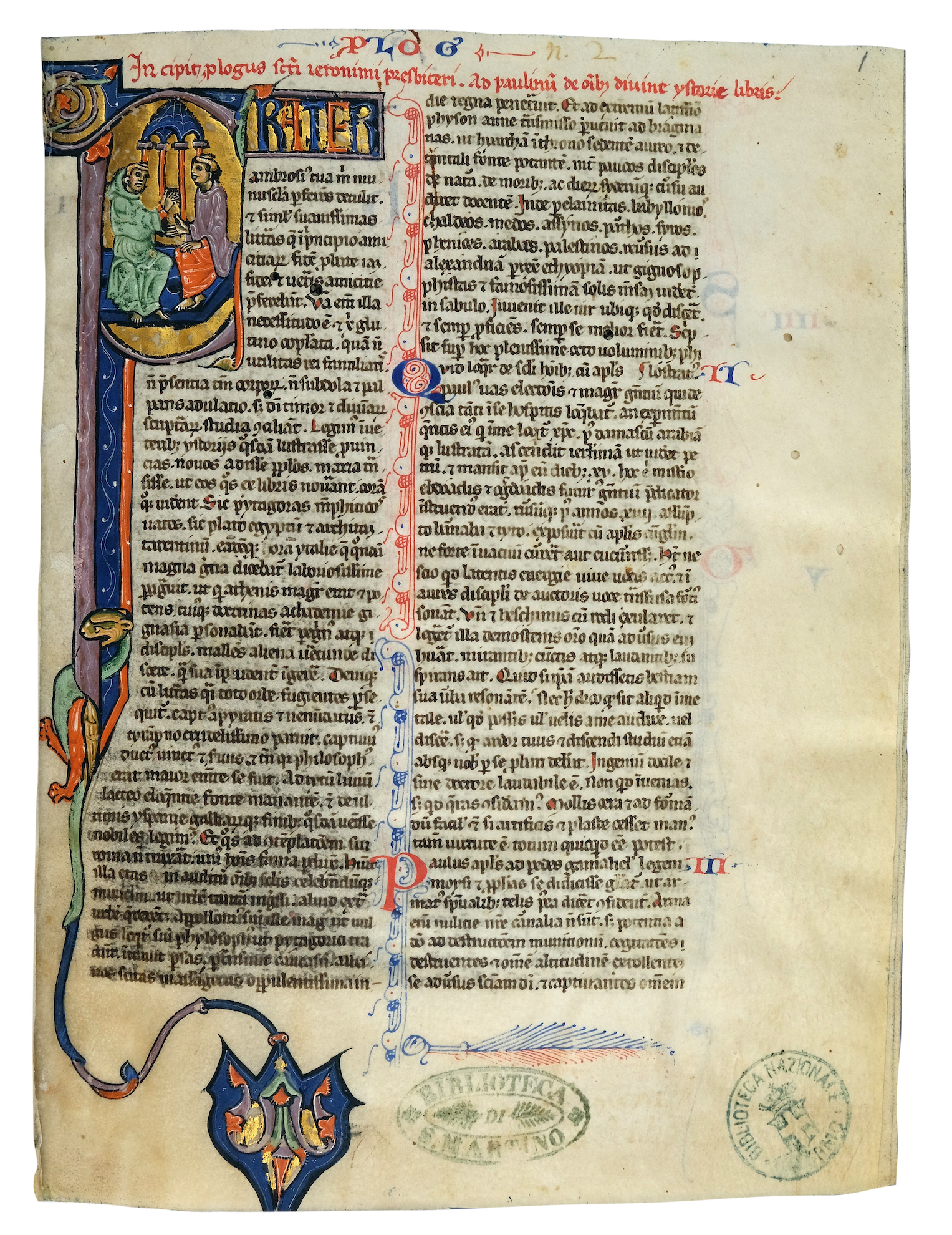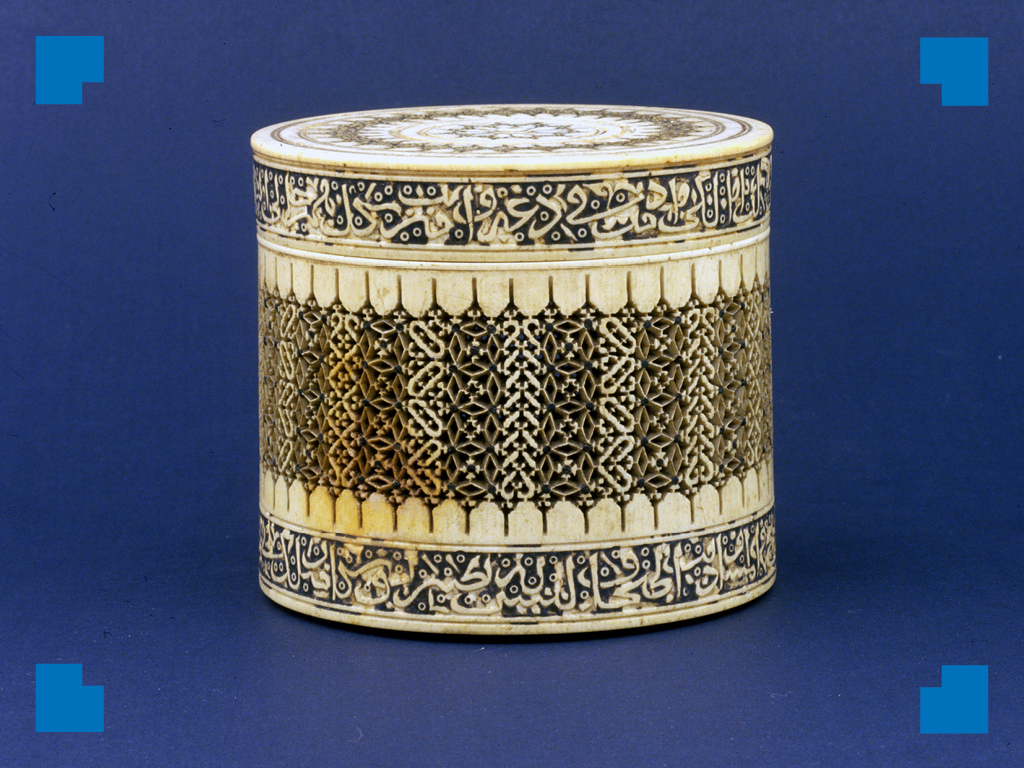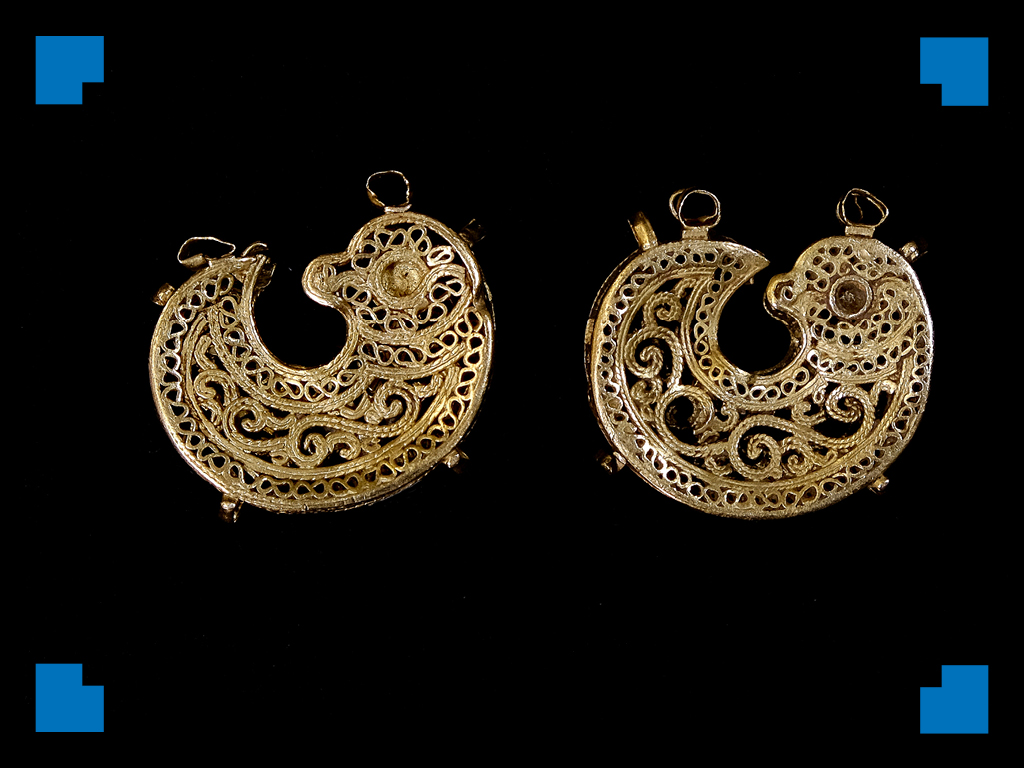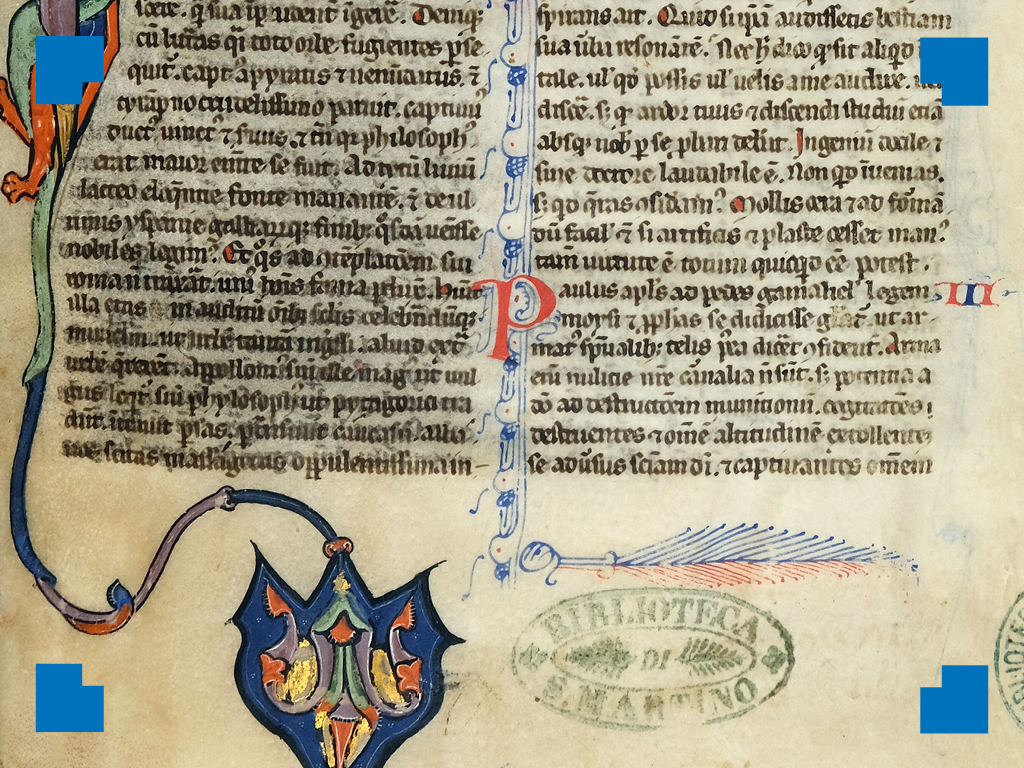
31. Swabian Bible called ‘of Manfred’
Scriptorium of Southern Italy or Sicily, 1258 ca.
Swabian Bible called ‘of Manfred’
parchment manuscript (18,5 14 cm)
Palermo, Central Library of the Sicilian Region “A. Bombace”, from the monastery of S. Martino delle Scale
I.C.13.
The period between the second half of the eleventh and the second half of the thirteenth century witnessed the emergence and spread of two different manuscript formats that contained and disseminated the Latin text of the Bible.
The first is the defined “atlantic” or “giant” manuscript; it originated in Roman or central Italian circles in the context of the reform of the Church under Pope Gregory VII and was later imitated in France, Spain and England.
The second one is “pocket-sized” and preferred by secular courts, such as the Swabian Italo-Southern and Sicilian court of Emperor Frederick II, but especially by that of his son Manfred and his grandson Conradin of Swabia (son of Conrad IV, Manfred’s half-brother).
Those sovereigns did not hesitate to commission Bibles of smaller size, but with rich ornaments, to the best scriptoriums.
The manuscript virtually displayed in the exhibition belongs to this second group and was produced by an anonymous artist called “Master of the Manfredian Bibles”, because he was believed to be the author of a group of illuminated codices. They are characterized, like this one, by the presence of late-Norman (with reference to the mosaics of Monreale), North-French and Parisian elements.
The ornamentation is Gothic in style and often includes initial letters that are prolonged with sprays, snakes, dragons, and end with motifs defined as “kite” decorations.


